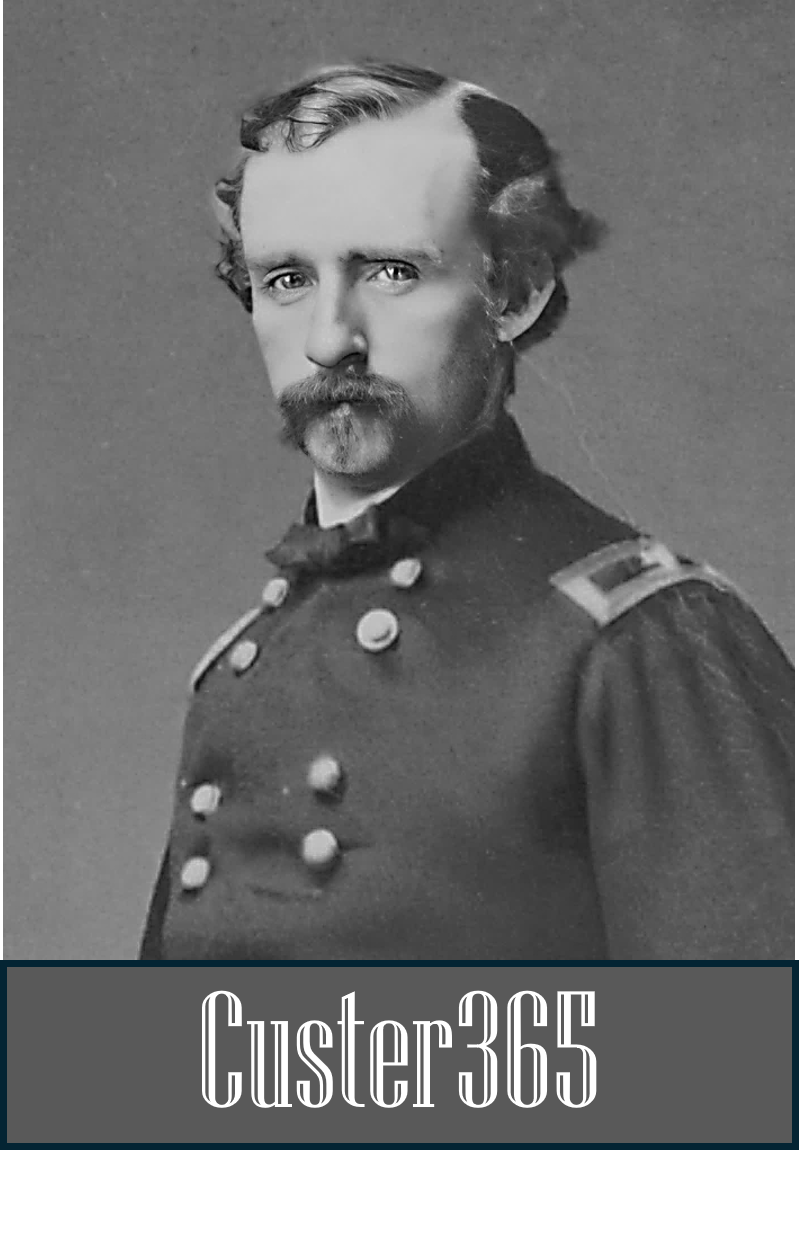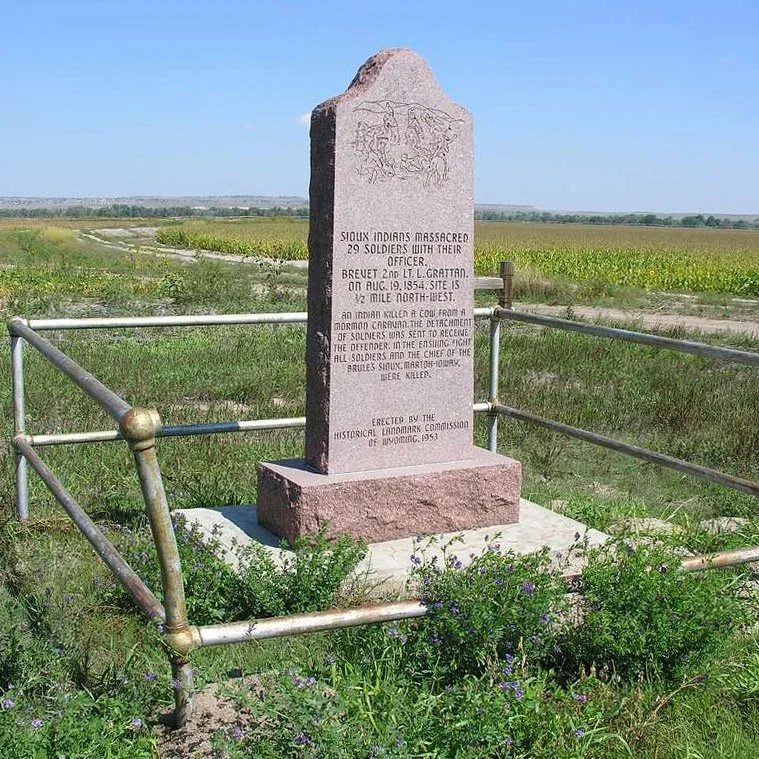AUG 19: The Grattan Massacre
On Aug. 19, 1854, an argument over a stray cow precipitates the Grattan Massacre, in which 30 U.S. Army soldiers and an interpreter are killed in retaliation for the shooting of Chief Conquering Bear of the Lakota Sioux.
A monument near the scene of 1854’s Grattan Massacre in Wyoming. (Credit: National Park Service)
This event took place on the Oregon/California Trail east of Fort Laramie along the North Platte River, located in Nebraska Territory, which is now part of Goshen County, Wyoming.
In 1841, the first, small parties of emigrants used the trail to head west. By 1843, 1,000 emigrants made the same trip over the route. Two years after that, 5,000 emigrants followed what was now being called the Oregon Trail, from the Missouri River west to free and fertile farm lands in Oregon.
When gold was discovered at Sutter’s Mill near Sacramento in California in 1848, it unleashed a mass of 30,000 gold-seekers in 1849 making the trek across the Northern Plains to California.
Relationships between emigrants and American Indians along the Great Platte River Road were generally peaceful, according to Douglas R. Cubbison, former president of the Wyoming State Historical Society, in a piece he wrote entitled, “The Grattan Fight: Prelude to a Generation of War.” It can be found on WYOHISTORY.ORG. Emigrants were sometimes in great fear of the native people, Cubbison wrote, and many began the journey “armed to the teeth to defend themselves.”
On the trail, most contacts were with Indians asking for “presents”–small quantities of foodstuffs or luxury items such as cloth, coffee and tobacco. These were essentially tolls that tribespeople sought for permitting the emigrants to traverse their land—and to kill the game, cut the wood and graze the grass that grew along it.
On Aug. 18, 1854, a sick cow lagged behind a Mormon wagon train as it passed Fort Laramie heading for Utah Territory. Large, separate camps of Minniconjou, Brule and Oglala Sioux Indians were nearby that summer, waiting for distribution of their annuities—their annual government payments in beef and other goods as part of the terms of the treaty signed three years before.
With their promised rations late, their pony herds eating up all the available grass and most of the local game long since exhausted, the people were hungry. The sick cow ended up in in a Brule Sioux camp, where she was killed by a visiting Minniconjou warrior, High Forehead, and ended up as dinner. The emigrant reported his loss to Brevet 2nd Lt. Hugh B. Fleming, an inexperienced officer. The emigrant perhaps hoped that the Army would issue him a free replacement.
According to Cubbison, Fleming did nothing about it for a day, during which Conquering Bear, a well-regarded Brule Sioux chief who enjoyed good relations with the Army, came to the fort and named High Forehead as responsible for the theft. He offered either a horse or mule in restitution for the cow. Fleming said he would wait for the arrival of the Indian agent to negotiate a solution.
But Lt. John Grattan, described as “brash and arrogant” by Cubbison, was eager for confrontation. On August 19, he urged Fleming, his superior officer, to send him to the village. After a long, loud argument Fleming finally agreed, and authorized Grattan to take 22 men. Grattan asked for volunteers.
Lt. Grattan took two sergeants and 27 enlisted men with him to arrest High Forehead, along with an interpreter, a 12-pounder mountain howitzer and a 12-pounder Napoleon howitzer. They entered the Brule Village, where Conquering Bear resided. It consisted of about 700 lodges —approximately 4,200 people, including perhaps 1,000 warriors.
Grattan demanded that the chief hand over High Forehead. A delay ensued, Grattan grew increasingly impatient, and he ordered the howitzers moved in to the center of the village. The standoff erupted in gunfire when a soldier fired his musket into a group of Indians. Then the two howitzers fired, but high; the grapeshot hitting only the tops of the lodgepoles.
“Surrounded as the soldiers were, the fight didn’t last long,” Cubbison wrote. “Grattan’s body would later be found with 24 arrows in it, including one through his head. His body had to be identified by his pocket watch. His two sergeants attempted a fighting withdrawal, but within about 10 minutes Grattan, the interpreter and his entire detachment had been wiped out. One wounded man escaped and started back for the fort, and finally died there a few days later.”
In the end, Grattan, his interpreter, and 29 soldiers were dead. So was Conquering Bear (Chief Matȟó Wayúhi.)
The Grattan fight is credited with being the initial conflict of the first Sioux War. In an eerie coincidence, 12 years later hot-headed Capt. William J. Fetterman led a detachment of 81 U.S. soldiers straight into an ambush and were killed by a large force of Lakota, Cheyenne, and Arapaho warriors, including Crazy Horse. The massacre occurred on December 21, 1866, near Fort Phil Kearny in Wyoming.


